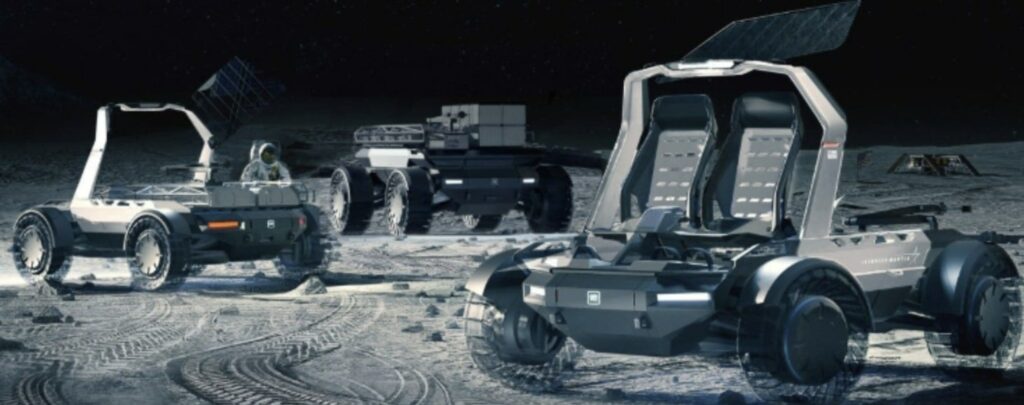NASA is creating plans and white papers to describe what they will need for lunar cargo movement in near term exploration and development plans.
NASA has already defined a Lunar Terrain Vehicle (LTV) and Pressurized Rover (PR) for crew transportation and with limited cargo mobility functions. There is planned near-term robotic missions. There is a Commercial Lunar Payload Services (CLPS) program which provide only small-scale mobility.
A new paper describes the integrated cargo mobility drivers for consideration in future architecture and system studies, with a focus on the human lunar exploration architecture. Scientific and uncrewed, robotic missions could necessitate additional mobility needs beyond those discussed here.
Current capabilities planned for lunar surface operations are limited to transporting approximately 1,500 kg of cargo. However, fulfilling other key exploration objectives could require cargo of sizes and masses beyond of these planned capabilities, creating the need for additional mobility capabilities.
One of the largest drivers of mobility needs on the lunar surface is moving cargo from its landing site to its point of use. Numerous factors drive cargo point of use, many of which necessitate separation from landing sites (e.g., darkness caused by a lander’s shadow, point of use contamination by landers, or blast ejecta from lander plume surface interactions). These relocation distances can include the following factors:
• Separation from lander shadowing (tens of meters)
• Lander blast ejecta constraints (>1,000 m) due either to separation between the lander and existing infrastructure or lander ascent
• Support for aggregation of elements in ideal habitation zones from available regional landing areas (up to 5,000 m)
NASA forecasts a cargo demand range of 2,500 to 10,000 kg per year for annual recurring logistics and some frequency of small to large elements during the Foundational Exploration campaign segment. This includes occasional large cargo deliveries of up to 15,000 kg for elements like rovers or habitation modules.
Brian Wang is a Futurist Thought Leader and a popular Science blogger with 1 million readers per month. His blog Nextbigfuture.com is ranked #1 Science News Blog. It covers many disruptive technology and trends including Space, Robotics, Artificial Intelligence, Medicine, Anti-aging Biotechnology, and Nanotechnology.
Known for identifying cutting edge technologies, he is currently a Co-Founder of a startup and fundraiser for high potential early-stage companies. He is the Head of Research for Allocations for deep technology investments and an Angel Investor at Space Angels.
A frequent speaker at corporations, he has been a TEDx speaker, a Singularity University speaker and guest at numerous interviews for radio and podcasts. He is open to public speaking and advising engagements.
>>> Read full article>>>
Copyright for syndicated content belongs to the linked Source : Next Big Future – https://www.nextbigfuture.com/2024/06/nasa-defines-lunar-cargo-mobility-needs-as-part-of-larger-moon-ma.html
